
Chimonanthus praecox var. concolor landscape architect's pages
Chimonanthus praecox ("wintersweet") is the only species widely grown as an ornamental plant, for its spicily scented winter flowers; [6] these are also used in floristry as cut flowering branches, which can also be forced as with forsythia. The petals are quite waxy.
Free photo Chimonanthus Praecox Plant Leaf Branch Max Pixel
Family: Calycanthaceae Country of Origin: China Location in the Arboretum: Joseph A, Witt Winter Garden. There are three mature specimens located throughout the Witt Winter Garden. The most prolific blooming specimen is located in the "twig bed" at the southwest corner of the garden.
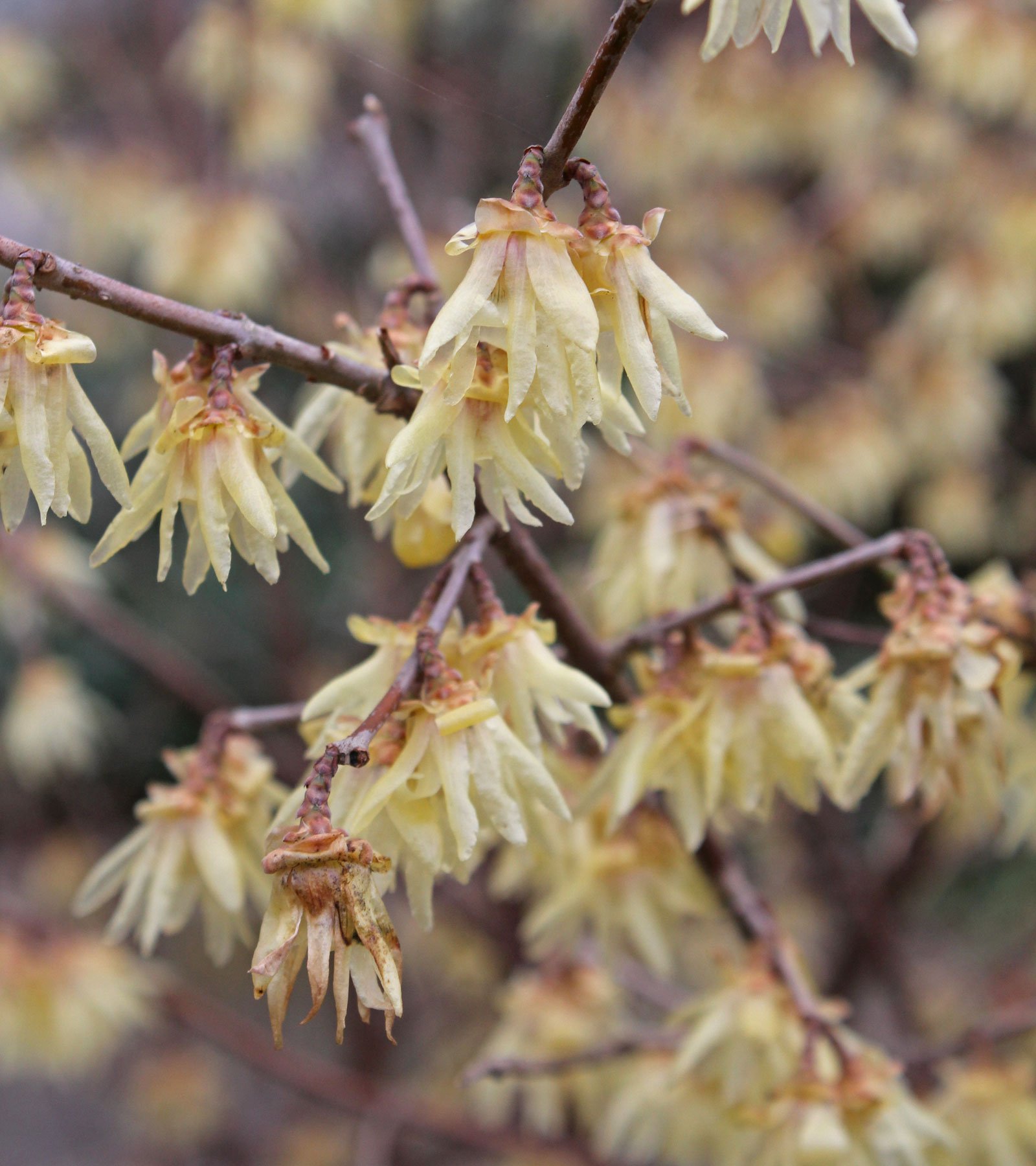
Chimonanthus praecox
Most of the year the Chimonanthus is relatively obscure, but when Winter comes, so does their appearance of small yellow flowers that carry a sweet and very pleasant smell. The appear delicate, but hold very well. Consider it one of the best scented flower. Does best with cold winter.
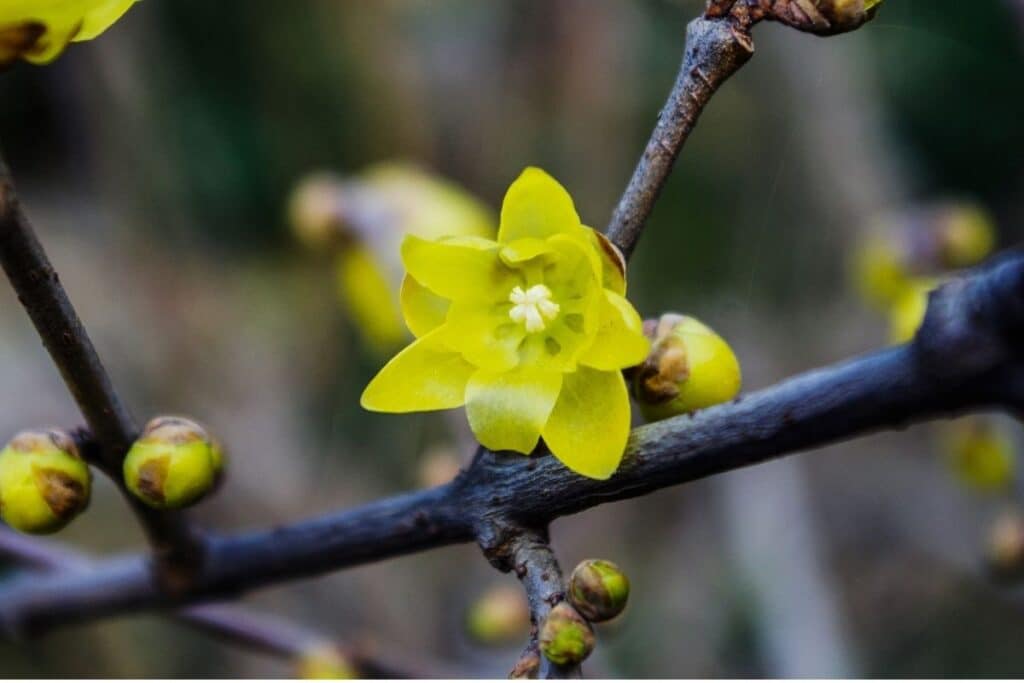
How to Grow and Care for Wintersweet (Chimonanthus praecox)
One of the finest plants that the winter garden can offer! This shrub will usually take a few years to start to flower, but it is worth the wait. Grows up to 10-15 ft. tall (300-450 cm) and 8-12 ft. wide (240-360 cm) This plant is best grown in full sun in average, medium moisture, well-drained soils. Drought-tolerant when established.

Chimonanthus Praecox Shrub 10/50/200 Seeds, Fragrant Wintersweet, Hard The Plant Attraction
Chimonanthus Praecox photograph by coniferconifer; CC.. It prefers milder winter climates and once established, can withstand temperatures down to -15°C (5°F). This plant is often confused with the toxic plant Acokanthera, but the wintersweet itself carries no known toxicity, and it is considered safe around humans and pets.In some rare instances, however, it has shown potential toxicity to.

Chimonanthus praecox (Fragrant Wintersweet, Wintersweet) North Carolina Extension Gardener
Chimonanthus praecox is a deciduous Shrub growing to 3 m (9ft) by 3 m (9ft) at a medium rate. See above for USDA hardiness. It is hardy to UK zone 7. It is in flower from November to March, and the seeds ripen from May to June. The species is hermaphrodite (has both male and female organs) and is pollinated by Insects. Suitable for: light (sandy), medium (loamy) and heavy (clay) soils and.

Chimonanthus praecox Cambridge Botanic Garden
Chimonanthus praecox, commonly known as wintersweet or Japanese allspice, is a deciduous shrub that typically grows 10-15' tall and to 8-12' wide. It is native to forested areas of China.

Chimonanthus praecox (Fragrant Wintersweet, Wintersweet) North Carolina Extension Gardener
Chimonanthus praecox 'Grandiflorus': As the name suggests, this variety is characterised by particularly large flowers. In terms of growth and winter hardiness, however, the 'Grandiflorus' is comparable to the wild form of Chimonanthus praecox. Chimonanthus praecox 'Luteus': This variety also only differs from the wild type in its.

Chimonanthus praecox (Fragrant Wintersweet, Wintersweet) North Carolina Extension Gardener
Chimonanthus praecox should be mulched annually with well-rotted manure or compost. Keep pruning to a minimum, removing dead, diseased or crossing branches. 'Luteus'. Chimonanthus praecox 'Luteus' - the flowers are larger than the species and completely yellow, without the purple inner petals. It blooms later in winter than original.

January 2017 Plant Profile Chimonanthus praecox
Size: Large, upright fountain shape shrub, grows 10-15' x 10-15' Culture: Sun or part shade, adapts to acidic or alkaline soils but prefers better soil drainage than most Portland soils provide. Amend planting bed with compost to improve drainage. Prune oldest branches to the ground after bloom. To rejuvenate old plants, prune to 12" after bloom.

January 2017 Plant Profile Chimonanthus praecox
Chimonanthus praecox : A slow growing, easy to grow broadleaf deciduous shrub with green foliage and purple and yellow flowers in spring and winter. Drought tolerant once established. Grows best in well-drained, rich and average soil. Plant type: shrub Plant family: #Calycanthaceae Foliage: deciduous green Mature size: 8 FT - 12 FT - wide, 8 FT - 15 FT - tall Flowers: purple and yellow blooms.

Chimonanthus praecox Chimonanthus praecox Pepinierele Van den Berk
Wintersweet shrubs ( Chimonanthus praecox) are very popular ornamentals in their native land of China. They were introduced to Japan in the 17th century where the plant is called Japanese allspice. Wintersweet is also cultivated in Japan, Korea, Europe, Australia, and the United States. Wintersweet is deciduous and, although considered a shrub.

Chimonanthus Praecox Wintersweet LARGE Garden Plants
Common name: Fragrant Wintersweet Pronunciation: ky-mon-ANTH-us PRE-koks (PRAY-koks) Family: Calycanthaceae Genus: Chimonanthus Type: Broadleaf Native to (or naturalized in) Oregon: No Broadleaf deciduous shrub, large, 10-15 ft (3-4.5 m) high, with a somewhat narrower width, multistemmed.
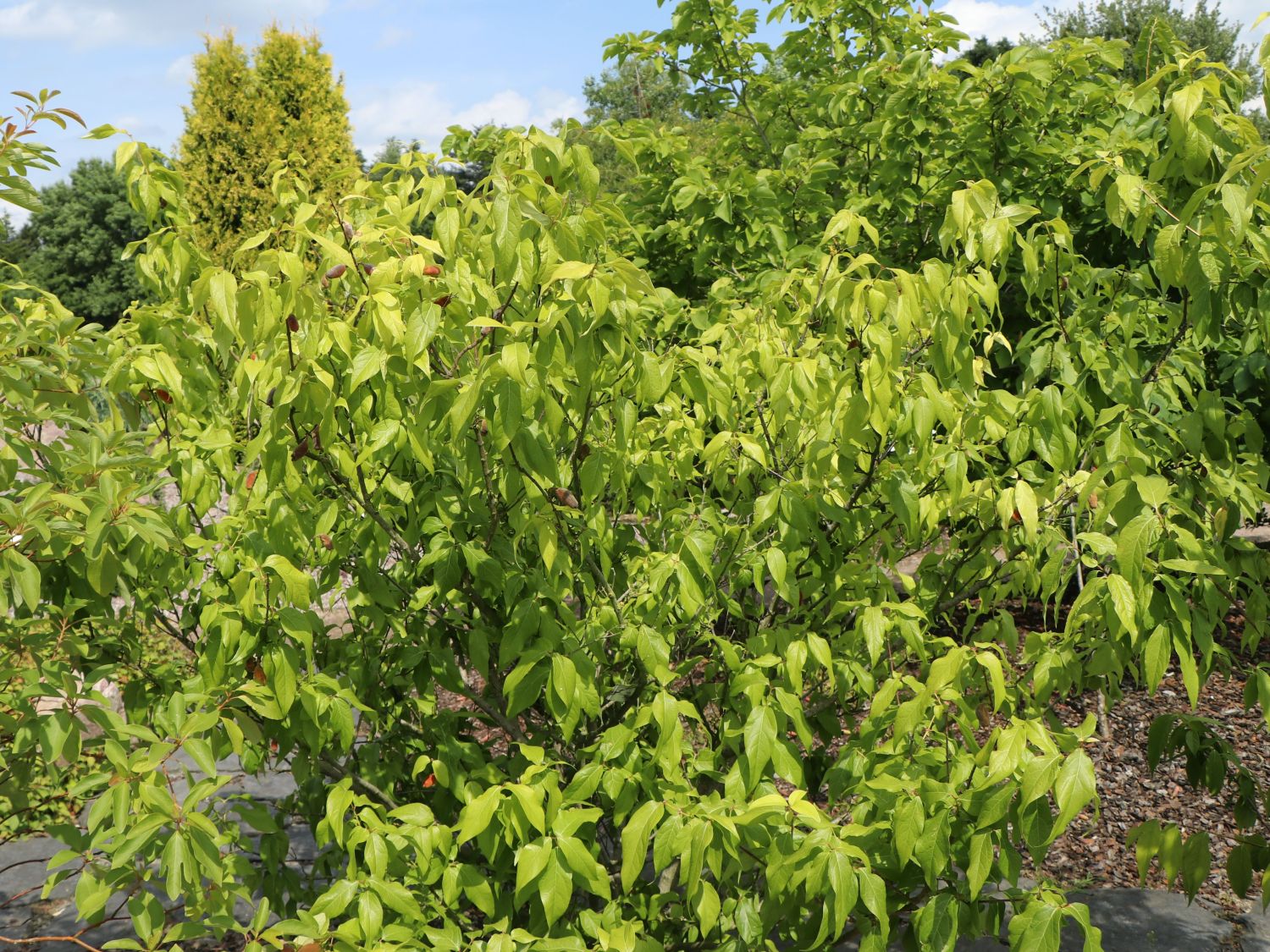
Winterblüte Chimonanthus praecox Baumschule Horstmann
Chimonanthus praecox wintersweet A deciduous shrub with a bushy, much-branched habit, growing to 2.5m or higher against a wall. Leaves are lance-shaped, 5-12cm long, shining dark green. Flowers solitary or in small groups, almost stemless, borne in winter at the joints of the previous summer's shoots.
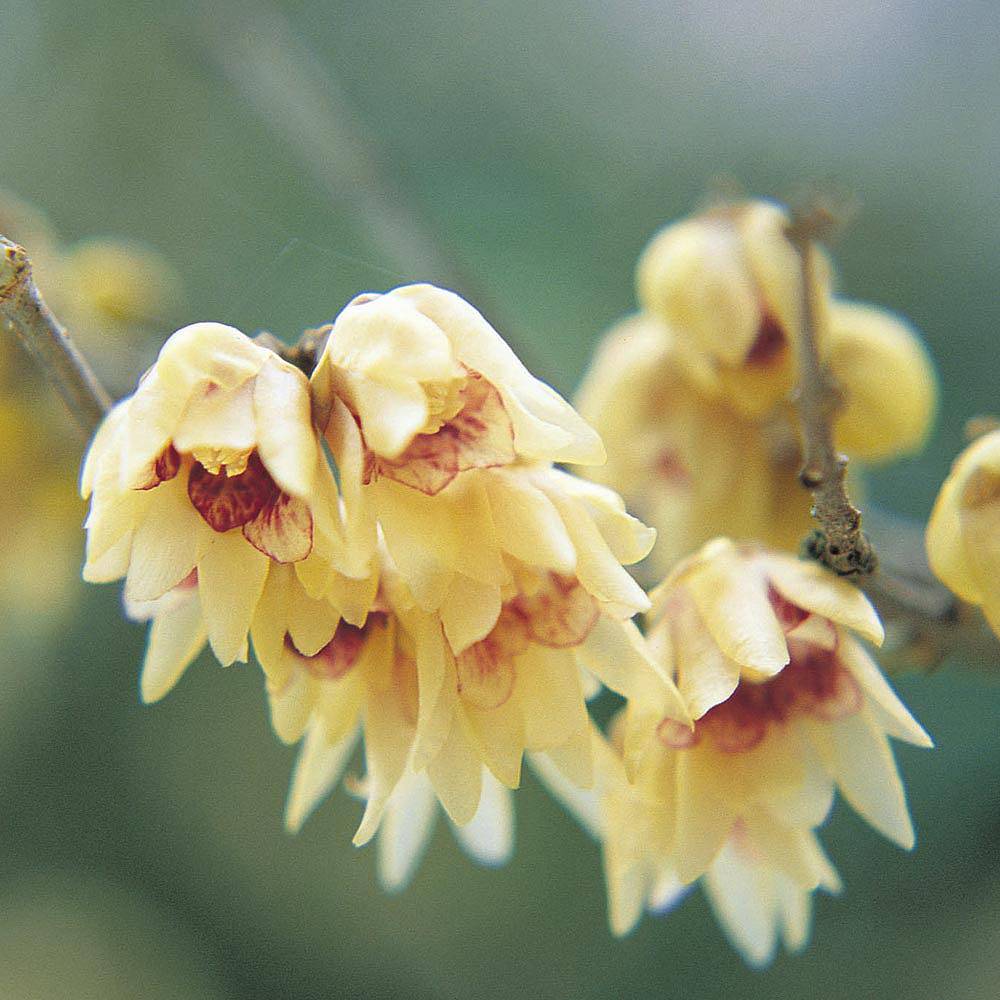
Chimonanthus praecox plants Thompson &
The Spruce / Evgeniya Vlasova Light To encourage your wintersweet to produce more blooms, plant it in a location that receives full sun. Soil Wintersweet thrives in moist, fertile, well-drained soil. It is not fussy about pH, growing equally well in acidic, neutral, or alkaline soils. Water Water deeply and regularly until established.
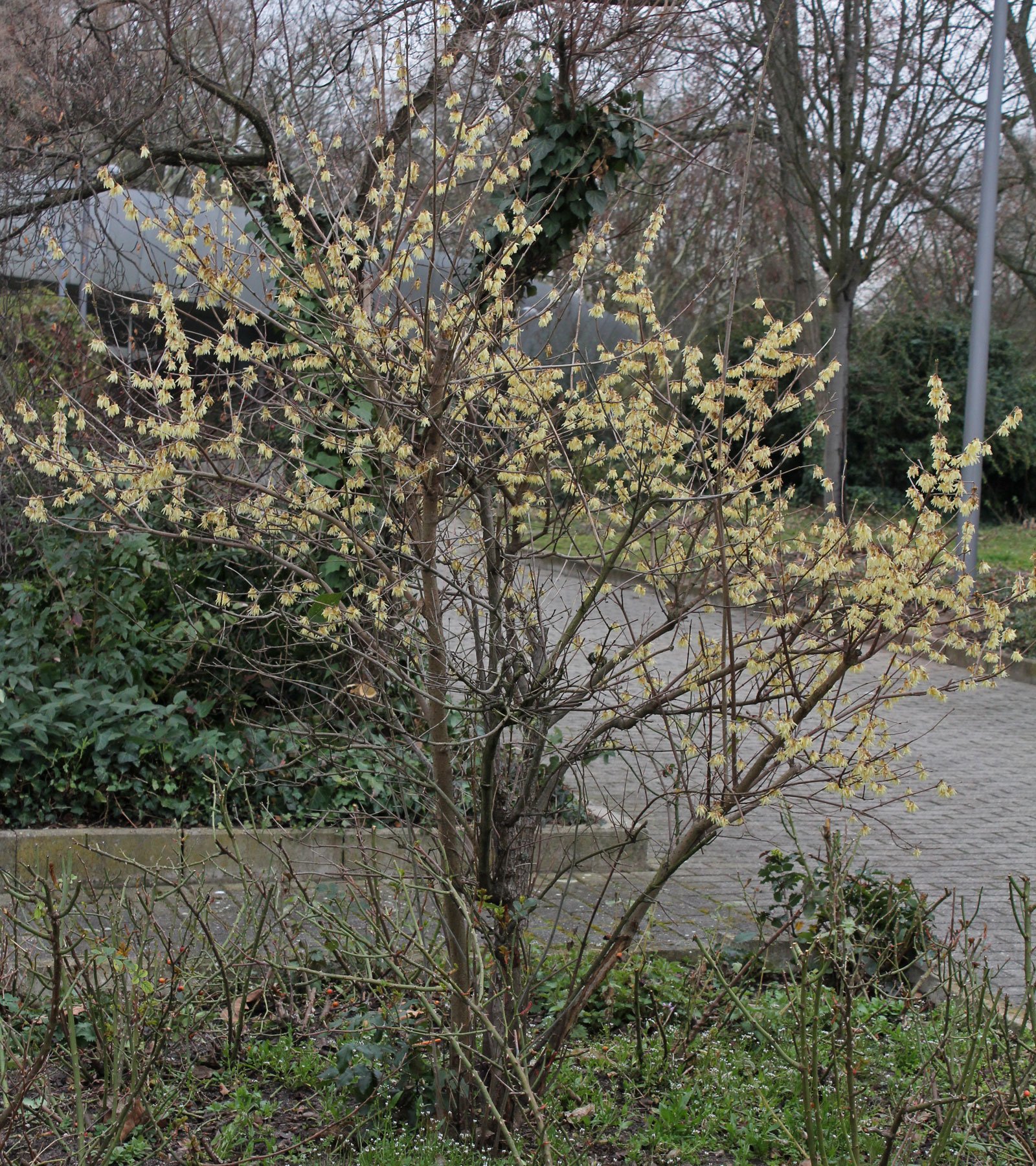
Chimonanthus praecox
Chimonanthus praecox needs 0.8 cups of water every 9 days when it doesn't get direct sunlight and is potted in a 5.0" pot. Use our water calculator to personalize watering recommendations to your environment or download Greg for more advanced recommendations for all of your plants. Water 0.8 cups every. 9 days.